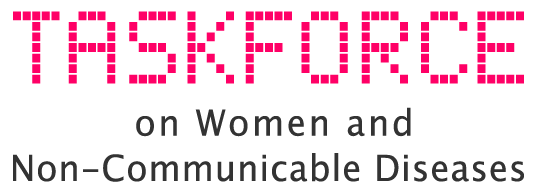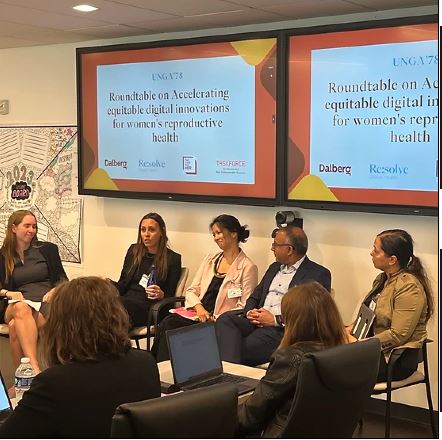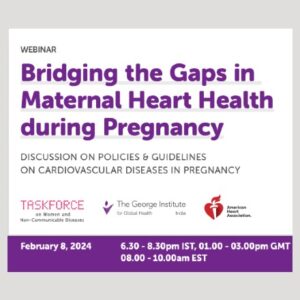Barriers to sexual and reproductive healthcare affect women in all sections of society. On the sidelines of the recent UN General Assembly, innovators, funders, and policymakers deliberated on ways to harness digital solutions to advance health equity.
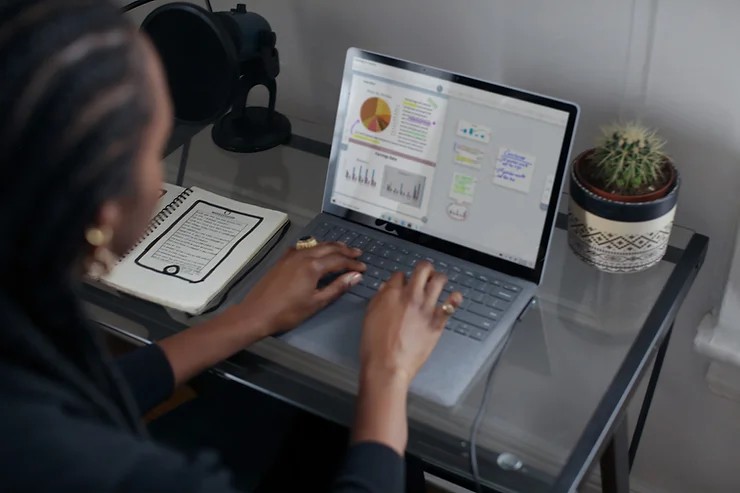
Strengthening women’s access to reproductive healthcare through adequate funding and education is one of the crucial global needs that often remains unaddressed by policymakers and financial agencies working to drive societal change.
A multi-pronged approach is required to better address women’s reproductive healthcare needs—from access to abortion services and contraceptives, to improved pathways to sexual and reproductive health services, and support for health workers on the ground, many of whom are women. This, in turn, can help tackle entrenched inequities and close the persistent global gender health gap.
Recent statistics from the WHO reveal that in 2017 nearly 808 women died each day as a result of complications from pregnancy and childbirth. In total that year, 295,000 women died during pregnancy and childbirth.
These risks are compounded for women in low- and middle-income countries (LMICs), for whom the risk of death from maternity-related causes is around 130 times higher compared to women in high-income countries.
In a 2020 report, the Guttmacher Institute showed that 923 million women of reproductive age in LMICs “want to avoid pregnancy”, but 218 million of them have no access to modern contraception methods.
Barriers to reproductive healthcare are significant and intersectional, impacting women across cultures—from those in places of privilege to those where needs are frequently unmet, from young to old, from straight and cisgender women to those who are part of the greater LGBTQ+ community.
Among the spectrum of solutions being explored to enhance women’s reproductive healthcare is the rapidly advancing digital technology. Can digital interventions and innovations help end the inequities in women’s reproductive healthcare?
Why representation matters
In an effort to address head-on the issues affecting women’s reproductive healthcare globally, Re:solve Global Health, Dalberg, The Case for Her, and Taskforce on Women and NCDs convened a probing conversation between innovators, funders, and policymakers. The goal was to foster collaborations between leaders from disparate disciplines.
The event, ‘Roundtable on Accelerating Equitable Digital Innovations for Women’s Reproductive Health’, was held at the American Heart Association’s New York City offices during the 2023 UN General Assembly (UNGA). It brought together 45 executives from a wide range of industries—from non-profits and philanthropy to healthcare and international development—for a panel discussion, interactive question-and-answer sessions, an informal conversation with a representative from the Australian government, and opportunities for networking.
Throughout the day’s discussion, a key theme emerged repeatedly: that it is vital to give women the tools needed to make indelible, meaningful changes in reproductive health around the world. Panelists and attendees continued to reiterate just how important it is to empower women leaders in discussions on funding and access, policy and technological innovation.
“Having a human-centred, patient-centred, woman-forward design for healthcare products and policies starts with having someone at the helm designing for the population they are a part of, rather than someone who is trying to make their best guesses because it isn’t part of their lived experiences.”
A significant issue connecting the various discussions during the day centred on equity. How can digital solutions advance health equity around the world and augment existing health delivery systems?
One of the featured speakers, Lindsey Taylor Wood, founder of The Helm, a venture capital firm that invests in women-led startups, says that digital health startups can all too often lose sight of the needs of the people they aim to serve.
She says the success of Tia, a US-based digital healthcare startup that she helped foster, owes to the fact that its telehealth offerings related to women’s reproductive health work in tandem with existing healthcare systems, integrating digital innovations with vetted clinical expertise.
To improve access to this kind of technology, which has gained in significance since the telemedicine boom of the pandemic years, companies must adopt a person-centred approach. A healthcare startup focused on women should discern their unmet needs and tailor products that fill the gaps.
This entails putting in charge people who represent the lived realities of the consumer. “Having a human-centred, patient-centred, woman-forward design for healthcare products and policies starts with having someone at the helm designing for the population they are a part of, rather than someone who is trying to make their best guesses because it isn’t part of their lived experiences,” Wood says on the rationale behind supporting female-led companies like Tia.
“We have seen such success with our portfolio companies because they are building in an inclusive way from the very beginning, and they are using innovation—and specifically digital technology—to underpin this.”
Another panelist, Siddhartha Goyal, CEO and co-founder of Nivi, a healthcare chatbot platform with a wide user base that includes pharmaceutical companies and healthcare providers throughout India, Kenya, and Nigeria, echoes these sentiments.
“One of the common questions we’ve received from partners and customers is how we develop content… Our content team has a background in global and public health, and are women [themselves], so they can contextualise content better for our primary audience: women.”
Goyal says his team also listens to, and works directly with people on the ground, including female healthcare workers at NGOs, to develop culturally sensitive, relevant content for its women users.
Dr Olivia Vélez, chief digital health officer at IntraHealth International, a global health non-profit that works with governments and community members in over 100 countries, adds that women make up the vast majority of the global health workforce, including about 70% of nurses and 90% of community health workers, which has implications for best-practice design of digital solutions.
If the tech sector remains dominated by men, if new artificial intelligence tools are tested by men who do not have the lived experience of being a woman, how could that possibly be in women’s best interests?
Pushing against stigma
Dr Genevieve Tam is co-founder and chief operating officer of Vitala Global Foundation, which collaborates directly with the women and girls for whom its digital healthcare tools are designed. Its projects currently include Aya Contigo, which reaches women and girls in Latin America and the US, and myPostCare, which serves women in Canada. Tam says her company is focused on eliminating stigma related to sexual and reproductive health, adding that human-centred design “shaped our model of work, which centres the marginalised users that we want to reach”.
She touched on the company’s work in Venezuela, where Aya Contigo, a digital health companion that is available in Spanish and English, and guides users seeking medical abortion and contraceptive care, was designed. Tam emphasises that such tools cannot succeed if their design is disconnected from the community they are intended to serve.
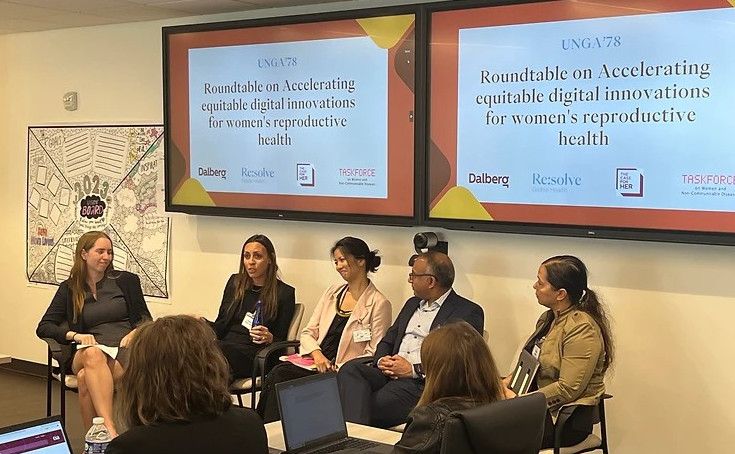
International executives gather at the event held during the 2023 UN General Assembly. From L-R: Julia Rohrer, Dalberg; Lindsey Taylor Wood, The Helm; Genevieve Tam, Vitala Global Foundation; Siddhartha Goyal, Nivi; and Olivia Velez, IntraHealth.
“We started by asking the folks on the ground: what is happening on the ground? What do you need to access when it comes to contraceptives or when it comes to abortion? What is happening with access? We basically co-designed the product with users and stakeholders,” she says, describing the app’s design.
“Together, they informed and participated in the development of a progressive web app with Spanish-language resources. This was very important because everything we were finding online was poorly translated in ‘bad Spanish’ and they were not able to understand it or get the information they needed.”
Tools like Aya Contigo that directly engage local communities in person-centred designing can go a long way in combatting stigma, Tam says.
“It could fill gaps in a way that was meaningful for them. And during this process, we recognised again that a digital app was not the only thing they needed. They also needed emotional support. We adapted and added a virtual chat through the app as well as on WhatsApp—again, by listening to their needs. Part of our work is iterating, adapting, and responding to the needs of the community.”
Wood says true progress depends on more women leading in this space. “The obstacles are endless: [women are] still not represented in research and we’re still underfunded. There’s been five times more capital directed towards [research on] erectile dysfunction, which affects approximately 19% of men, compared with premenstrual syndrome, which affects 90% of women—there are glaring biases,” she explains.
Role of governmental collaboration
Dr Stephanie Williams is Australia’s Ambassador for Regional Health Security at the Department of Foreign Affairs and Trade. She spoke at length about the Australian government’s commitment to directing international development funding to projects that promote gender equality. No matter the project’s goal, it must include an agenda that centres gender equity, Williams says.
“Part of the value of this event is that the organisers are convening people at the cutting edge of digital technology for women’s health, who are all giving really good examples of how they’re deploying their tools, and the challenges they’re facing—it was so interesting.”
She touched on Australia’s joint investment with UNICEF in Oky, a digital period tracker designed for, and with inputs from girls living in the Indo-Pacific region. This approach exemplifies how governments can make great strides in closing the gender health gap. When access to sexual and reproductive health information remains elusive to many women and girls, a tool like this could step in.
Following the day’s events, Williams touched on why cross-sector collaborations, like the ones she is a part of, are vital.
“I learned a lot today. Part of the value of this event is that the organisers are convening people at the cutting edge of digital technology for women’s health, who are all giving really good examples of how they’re deploying their tools, and the challenges they’re facing—it was so interesting,” she says. “As a development partner, we’re keen to support workable interventions in public health and sexual reproductive health and rights. This experience was so useful.”
Williams says in order to make a difference, leaders from all sectors have to work together.
“It’s important to have large, connected networks between the tech sector, women’s health advocacy groups, and governments funding development programmes—we need to have mechanisms by which we can come together and learn,” she says.
At an intersection of meaningful solutions
After the presentation, one of the attendees, Indrani Goradia, brought up a pressing issue for inclusion in discussions on digital interventions for women’s health: domestic violence. As the founder of Raft Cares, which is dedicated to empowering women who experience gender-based and domestic violence around the world, Goradia wanted conversations that convene stakeholders in global women’s health to address the threat, which affects one in three women globally.
“We can’t have a discussion of gender and gender equity without talking about domestic violence,” she says. “Perhaps there could be a tool…where you could press a button and communicate ‘I was just raped,’ and then it shows clusters of other reports in a given area,” Goradia suggests when asked about the potential tools she would like to see developed.
Likewise, Tam’s advice to others seeking to create digital tools for women’s sexual and reproductive health is simple: “don’t fund in siloes.”
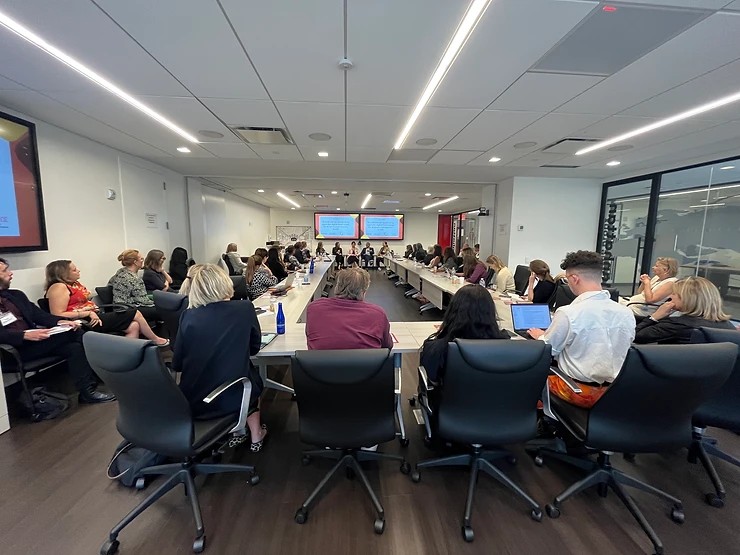
“They need more support, and digital tools can connect with existing health systems to promote a more holistic approach. Funding can therefore be less siloed, so we can leverage our collective power to facilitate better care for all.”
Wood adds that lack of funding for research into women’s health issues is one of the biggest “pain points” when it comes to supporting new digital reproductive and sexual health tools for women and girls.
She explains that diagnostic tools for many women-specific conditions remain subpar. It creates something of a chain reaction—without better research, there are fewer accurate diagnoses. This lack of attention to women’s healthcare can also create an environment that hinders the development of new technologies designed to improve the health and wellbeing of women and girls around the world.
“For example, there is a massive opportunity in diagnostics: 90% of healthcare decisions are based on a diagnosis, but how do you diagnose something if you don’t recognise the symptoms? And how do you recognise the symptoms if there’s no research?” she says.
“Specifically, as it relates to digital technology in reproductive and sexual health, a lot of the tools and solutions we are seeing are focused on STIs [sexually transmitted infections], fertility, menopause, and endometriosis, which we still haven’t cracked. So much is based on effective diagnosis, and there’s a huge opportunity to invest in this area.”
Look to always “fund women,” Wood adds.
“Just 4% of all research and development in healthcare goes to [women’s health]. Think about how staggering that is. If you have the capital and the appetite to really understand the incredible social benefit that can come from writing those first cheques, that is, to me, the most under-leveraged, greatest opportunity for gender equity in the world—investing in women,” she says.
Written by Brian Mastroianni
This blog was originally published at Re:solve Global Health
